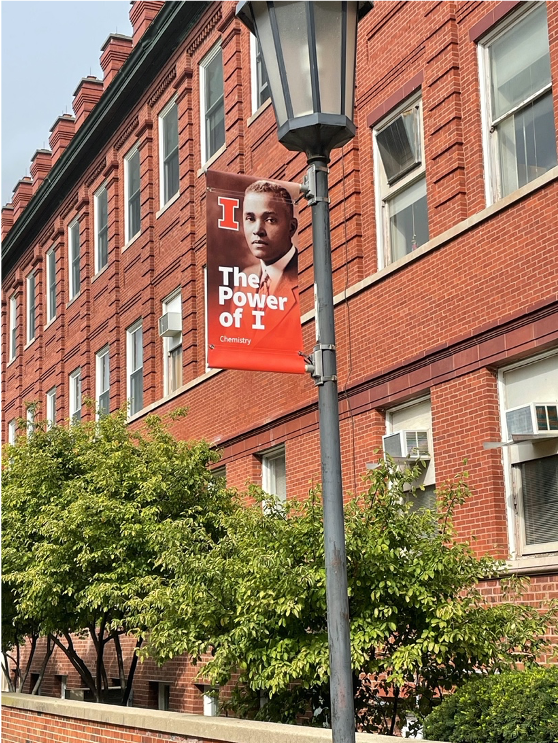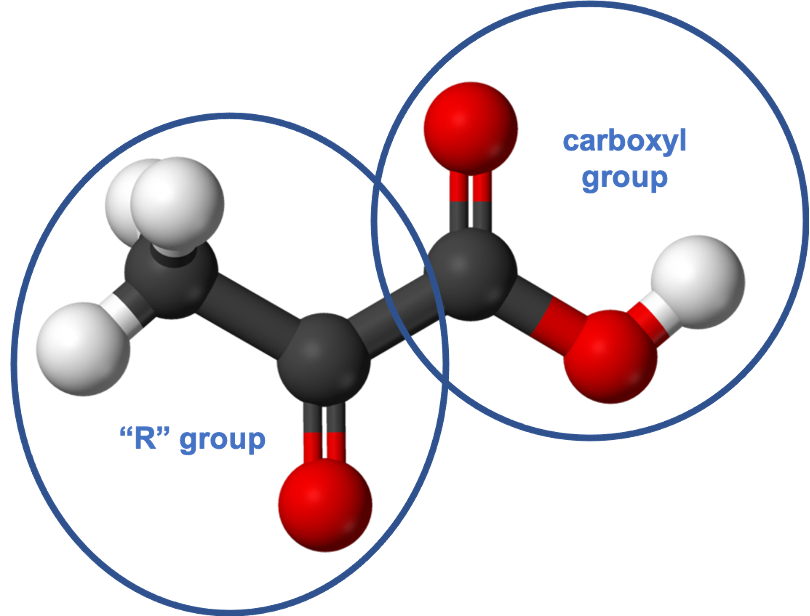As we come to the end of Black History Month for 2022, I find myself contemplating the banner that hangs year-round in front of Noyes Chemistry Lab to celebrate one of the shining stars of my own department at the University of Illinois at Urbana-Champaign (UIUC): St. Elmo Brady. Dr. Brady was the first African-American person to be awarded a Ph.D. in chemistry in our country. It was 1916, and Black students were not even allowed to live on campus yet, though a number had been enrolled at the university as far back as 1887.

So how did this amazing chemist make his way to UIUC? St. Elmo Brady was born in 1884 in Louisville, Kentucky, and went to Fisk University (in Nashville, Tennessee) for his undergraduate work, earning a B.S. in chemistry in 1908. Immediately thereafter he took a teaching position at Tuskegee Normal and Industrial Institution (now Tuskegee University) in Alabama. (This was the same era that renowned chemist George Washington Carver was the director of the Tuskegee Agricultural Experiment Station.)

In 1912 Brady was offered a graduate school fellowship to attend the University of Illinois; he took a leave of absence from Tuskegee and arrived in Urbana in the summer of 1913, living in segregated housing. As a graduate student, St. Elmo performed physical organic chemistry experiments, on how the acidity of carboxylic acids was affected by substituents at different locations along the carbon chain. In organic chemistry, a carboxylic acid is a molecule made of a “carboxyl group” of atoms with another group of atoms attached to it.

This work led to a number of innovations, including new synthesis and purification methods for classes of organic compounds. In the end, St. Elmo found that attaching a carbonyl group (C=O) in a molecular chain connected to the main carboxylic acid group did influence its acidity. Today we use this knowledge frequently when making predictions about the behavior of small-molecule organic acids in environments that have different pH (acidity) values.

While a graduate student, St. Elmo became the first African-American admitted to Phi Lambda Upsilon, the chemistry honor society, and was one of the first African Americans inducted into Sigma Xi, the scientific honor society. After earning his Ph.D. in 1916, he returned to Tuskegee and spent four more years there, building up the chemistry department; in 1917 he married Myrtle Marie Travers, who taught English at Tuskegee.
In 1920, he became the chair of Howard University’s chemistry department, building up that department to become the first at a Historically Black College or University (HBCU) to award graduate degrees in chemistry. In 1927, he returned to his alma mater, Fisk, to build up their chemistry department, and succeeded over the next 25 years in making Fisk a premier school for African-American students in STEM. Upon his retirement from Fisk, he spent 14 years building up the chemistry department at Tougaloo College, in Jackson, Mississippi. (What an amazing thing to do after retiring!) At all of the 4 HBCUs with which he was associated, St. Elmo Brady taught hundreds of students, raised funds for new chemistry buildings and instrumentation, and by all accounts was an exceptional mentor. He passed away on Christmas Day, 1966, at the age of 82.
The American Chemical Society honored the work of St. Elmo Brady by creating an ACS National Historical Chemical Landmark in his name, on Feb. 5, 2019, at UIUC. St. Elmo Brady’s grandchildren and members of the chemistry faculties of Fisk, Howard, Tuskegee and Tougaloo as well as our own department were in attendance. From the stories his relatives told us, St. Elmo Brady never dwelled on the negatives. Surely there must have been difficult times in his life; but he focused on helping students succeed. Thousands of chemists today owe their success in part to what he built.
![Brochure with a blue background and white and orange text for the Designation of an ACS National Historic Chemical Landmark for St. Elmo Brady. Includes black & white photo of a young Black man in a suit and tie. Subtitle: The first African-American to earn a Ph.D. in chemistry in the United States. Other text: Tuesday, February 5, 2019 | 4:30-5:30pm | 100 Noyes Lab. Featured speakers: Andreas C. Cangellaris - Provost, University of Illinois. Jameatris Rimkus - Archivist, University of Illinois. Dt. Peter Dorhout (BS '85 Chemistry) - American Chemical Society President. Reception: Immediately following ceremony in the Chemistry Library, room 170 Noyes Lab. 7:00 pm: No Belles: [100 Noyes Lab] - Performance celebrating remarkable women who overcame barriers to make groundbreaking scientific contributions. Events are open to the public. Illinois School of Chemical Sciences, College of Liberal Arts & Science.](https://sustainablenano.files.wordpress.com/2022/02/acs-nationallandmark.png)
As the current chair of the UIUC Chemistry Department, I have spent time thinking about St. Elmo Brady’s experience in our community over 100 years ago. We have come a long way from the days when a doctoral student in our department was not allowed to live on campus, but I know we still have a long way to go. The text of our commemorative plaque from the ACS National Historic Chemical Landmark ceremony does a nice job of summarizing St. Elmo Brady’s inspiring legacy:
In 1916, St. Elmo Brady (1884-1966) became the first African-American to obtain a Ph.D. in chemistry in the U.S., for dissertation work with Professor Clarence G. Derick at the University of Illinois at Urbana-Champaign. Brady went on to a research career in organic chemistry and served in leadership roles at Tuskegee, Howard and Fisk Universities and at Tougaloo College. He built strong undergraduate chemistry curricula and founded the first graduate chemistry program at a historically black college or university. He was an inspiration to students and colleagues alike during his lifetime, and his courage, determination and impact on others continue to inspire successive generations.
References
- American Chemical Society. St. Elmo Brady: A National Historic Chemical Landmark. 2019. Retrieved from https://www.acs.org/content/acs/en/education/whatischemistry/landmarks/st-elmo-brady.html
- UIUC Department of Chemistry. Brady, St. Elmo (1884-1966). Retrieved from https://chemistry.illinois.edu/spotlight/alumni/brady-st-elmo-1884-1966
